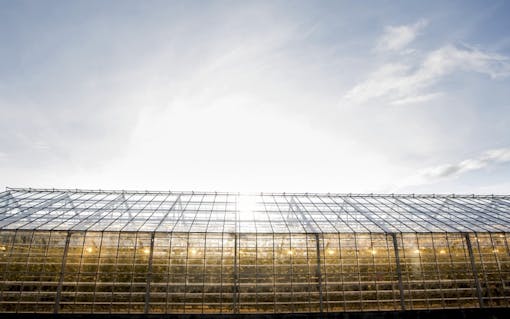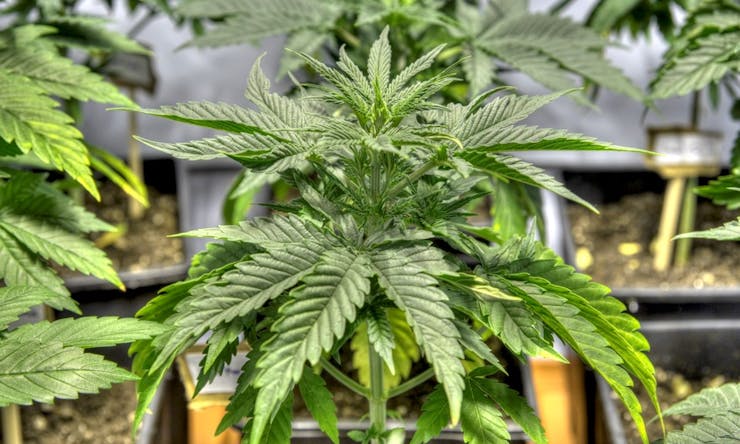Updated 03/21/19
Greenhouses are a great, inexpensive way to cultivate cannabis. They harness the power of the sun, provide a warm climate, and protect gardens from harsh environmental conditions.
They also allow for year-round cultivation, climate control, and a controlled exposure to sunlight. What’s more, they’re cheaper than growing indoors and produce a more consistent product than fully outdoor grows.
How Does a Greenhouse Work?

Solar radiation (energy from the sun) passes through the transparent walls of a greenhouse and heats up soil and plants, keeping a greenhouse warm even when the outside air temperature is cold.
In turn, soil and plants release energy as infrared radiation, which can’t escape the greenhouse, so the trapped heat warms the air.
On a hot day, you experience the science behind a greenhouse when getting into a parked car that has been left in the sun.
This greenhouse effect opens up the door to year-round cultivation, but cannabis still needs light from the sun in addition to the warmth that a greenhouse provides.
Recreating the Cannabis Life Cycle

Cannabis generally goes in the ground outside between April and July, when the sun is out for most of the day. This keeps plants in the vegetative stage.
Shop highly rated dispensaries near you
Showing you dispensaries nearOnce cannabis starts getting 12 hours of light or less, it’ll start flowering and producing buds. This happens outdoors at the end of summer, when days start to get shorter.
Advanced greenhouses can allow you to grow year-round by controlling light. They can provide supplemental lighting when it’s too dark outside and they can block out all incoming light if it’s too light outside.
Advantages of Growing Greenhouse Cannabis

Lighting Control
Supplemental lighting allows the grower to extend the hours of daylight and to improve the quality of light on overcast days. This will give you more control over the vegetative state of your plants.
Weather and Climate Control
Controlling your greenhouse climate is essential to producing a quality product. Some greenhouses have windows or paneling that can be opened or removed to either allow for wind circulation and to cool plants, or to trap in heat.
Greenhouses also provide cover for your plants, as heavy rains will damaged them and cause them to rot if too much moisture is trapped inside the buds. Some can also have dehumidifiers, heaters, air conditioners, and fans, all of which will also regulate the climate.
Manipulating Life Cycles
A common practice among greenhouse farmers is to run cycles of plants known as “light deps”—short for “light deprivation”—during the summer season. By cutting off the amount of light a cannabis plant gets before the end of the season, you can trick it into flowering early. This will allow you to pull a crop early, which is key if you live in a climate that gets cold and wet early in the fall—you’ll want to harvest before the rain sets in and causes your buds to get moldy.
If you want to continue growing cannabis through the fall and winter, you will have to lean more heavily on supplemental lighting and heaters.
During the winter solstice in Seattle, for example, there’s less than nine hours of daylight, and the light that is available is low in the sky and poor for growing. This light and energy will still help heat the greenhouse, but you would need to use supplemental lighting to extend the hours of light in the day in order to get a quality product.
Energy Conservation
The ability to control light and keep the climate stable will allow for year-round cultivation just like indoor growing. But growing outdoors and with a greenhouse is a lot more inexpensive than growing indoors, and you’ll save a lot of money on electricity costs. Even if you need to supplement light in a greenhouse, it’ll still be cheaper than the energy needed to power an indoor operation.





